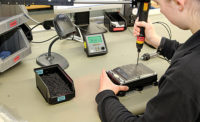As manufacturers build digital muscle to keep up with production demands, engineers and managers are feeling the pressure of adapting to new technologies and tools. However, dealing with complex software doesn’t have to be difficult. In a facility with lots of moving parts, workers will have the confidence to excel at their daily tasks when they have the right tools to succeed.
Here are five ways manufacturers can simplify the fastening process and make an assembler’s life easier.
1. Employ technology formats the operator is used to. Digital connectivity in a factory starts with the end-user. Using technology that engineers are familiar with can go a long way in simplifying their process. For example, some smart tools can be accessed and controlled by engineers using any smartphone, laptop or tablet. The interface is user-friendly and convenient, as the operator can make changes, check progress and review data from almost anywhere.
2. Choose smart tools with customizable features. Costly mistakes like stripping bolts or loose fasteners can contribute to downtime at a facility. When assemblers use tools with smart configurations that monitor and control angle rotation and torque, they can ensure that every fastener is secure and have assurance that they completed tasks accurately.
3. Limit programming and setup time. Long setup times can stagnate productivity and cause frustration. If a tool breaks, needs replacement or needs to be reprogrammed, it helps to have tools that require minimal steps to set up and connect. For example, the Ingersoll Rand QX Series tools can connect with the INSIGHTqcx cordless controller in less than a minute to keep production moving and to make tool replacement easier.
4. Go cordless. Cordless tools are beneficial for three reasons: agility, efficiency and safety. Operators can complete their work untethered with cordless tools and can access tough-to-reach places that corded tools would otherwise limit. When it comes to line rebalancing, a cordless option makes the process fast and painless, as the tool travels with the operator in one swift trip. Lastly, no cords mean no tripping hazards, so workers are safe in the workplace.
5. Keep ergonomics in mind. Operator safety is key in an assembly plant. For high-torque applications, assemblers will benefit from tools with reduced torque reaction. Tools like the QX ETS from Ingersoll Rand break up the torque reaction, so operators feel less feedback and avoid muscle fatigue.




